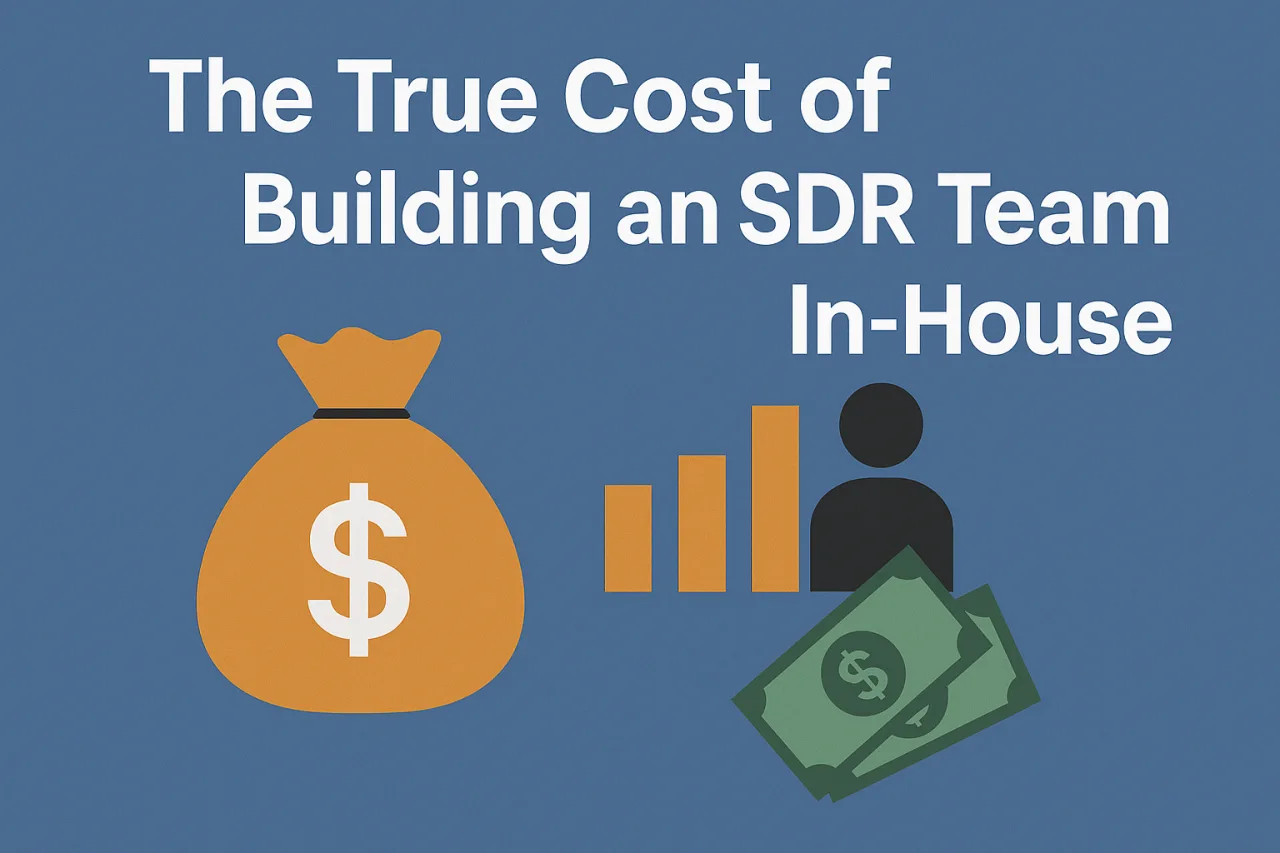On paper, hiring your own in-house SDR team sounds great.
Control, culture, collaboration — what’s not to love?
But when you start doing the real math, things get a lot more complicated.
Because the true cost of building, training, and managing an inside sales team usually runs a lot deeper — and a lot higher — than most companies expect.
Here’s what’s often missed when calculating what it really takes to build a productive SDR engine internally.
Salary is Just the Starting Line
Most companies focus on the obvious first: salary.
A good entry-level SDR salary in the US today can run anywhere from $50,000 to $65,000 a year, depending on the city and competition.
But that’s just the beginning.
You also have to account for:
- Taxes and benefits (health insurance, 401k, bonuses)
- Office space (or home office stipends)
- Laptops, phones, CRM licenses, dialers, email tools
- Manager salaries (because SDRs don’t manage themselves)
Realistic fully-loaded cost per SDR?
Somewhere between $85,000 to $100,000+ per year — per person.
And if you’re thinking, “We’ll just hire a few to start,” remember:
In outbound sales, volume matters. One SDR won’t cut it. You’ll need a small team, at minimum.
The Hidden Costs Nobody Talks About
Building an SDR team also comes with a bunch of invisible costs that aren’t on the spreadsheet — but definitely show up later.
1. Ramp-Up Time
Most new SDRs take 3 to 6 months to hit full productivity.
That’s months of paying salary with little pipeline contribution.
Multiply that by 3–5 hires, and the cash burn adds up fast before you even see real meetings booked.
2. Training and Coaching Overhead
You can’t just hand new SDRs a script and hope for the best.
Good appointment setting requires real training:
- How to research accounts
- How to personalize emails
- How to qualify leads properly
- How to handle objections without sounding pushy
Unless you have a full-time sales enablement team (and most startups don’t), that burden falls on your managers — pulling their focus away from revenue.
3. Turnover
Here’s the rough reality:
The average SDR tenure is around 14 to 18 months.
Many leave sooner if they don’t see fast career progression.
Every time an SDR leaves, you restart the clock:
Reposting the job → Interviewing → Hiring → Training → Ramp-up.
Turnover isn’t just a headache — it’s an expensive one.
Some estimates put the full cost of replacing a sales rep at 1.5x their annual salary.
Opportunity Cost: The Revenue You Could’ve Grown Faster
While you’re busy hiring, training, and rebuilding your team, your competitors are closing deals.
In-house models slow down your ability to scale fast — especially when market timing matters.
If you need pipeline now (not a year from now), waiting for an in-house team to “get there” can be a serious bottleneck.
So, Should You Still Build In-House?
There’s no one-size-fits-all answer.
If you have:
- Strong training infrastructure
- Patient leadership willing to invest a full year before ROI
- A predictable hiring pipeline of fresh SDR talent
Then yes, it could make sense long-term.
But if you need:
- Faster ramp
- More flexibility
- Lower upfront investment
- Focused execution without babysitting
Then building from scratch isn’t always the smartest move.
Understanding the true, full cost — not just salary — helps you make better decisions before you commit.
Because in sales, time is always more expensive than talent.
